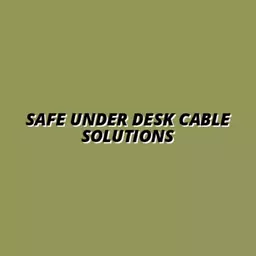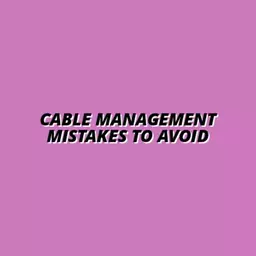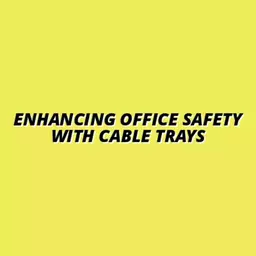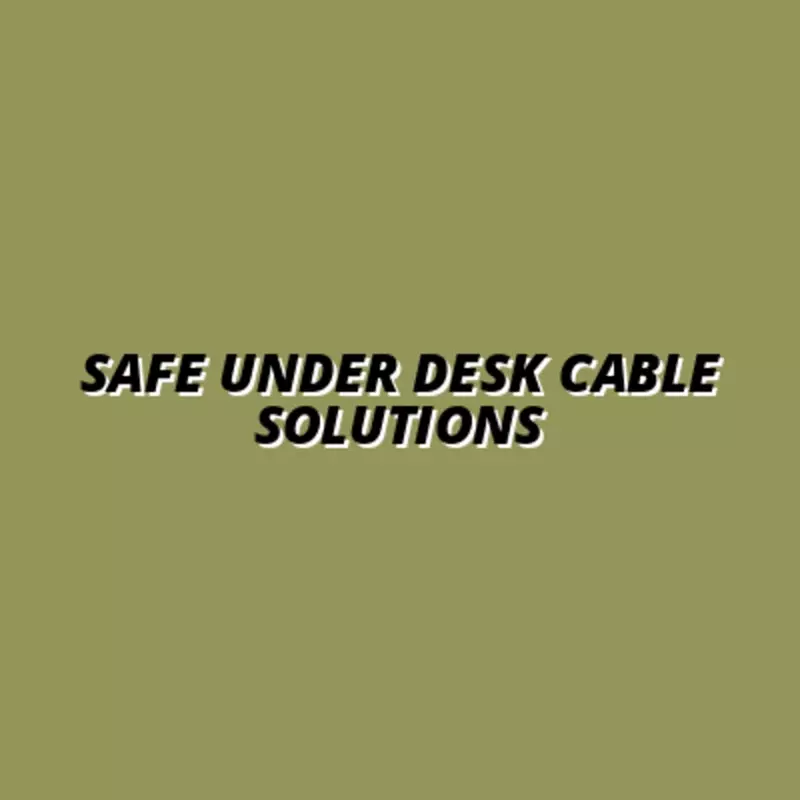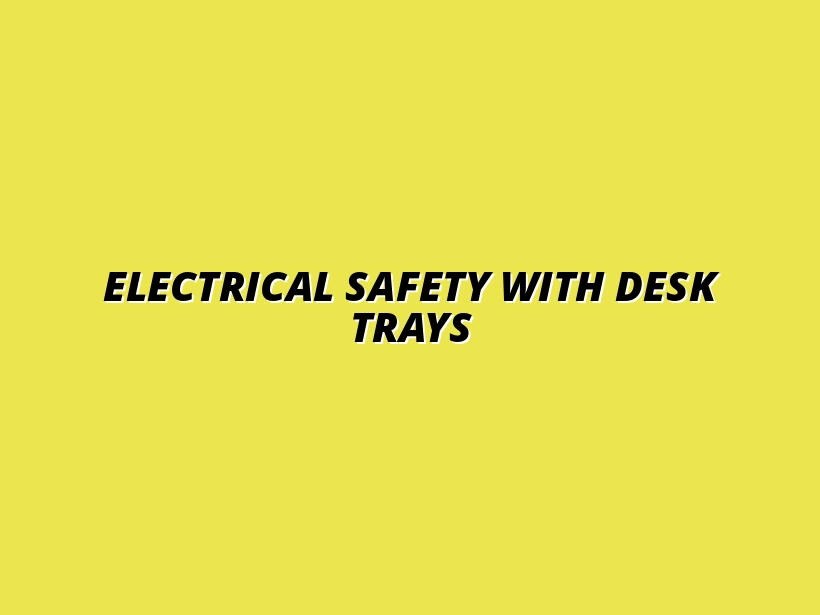
Electrical Safety with Desk Trays
Electrical safety is not just an option; it's a necessity for a productive work environment. As you navigate your workspace, consider how even a small oversight can lead to significant hazards. What steps are you taking to ensure safety in your surroundings?
Key Takeaways
- Understanding electrical safety is crucial for preventing accidents in both home and office settings.
- Identify potential risks such as fire hazards, electric shocks, and cable overloads that can occur due to poor cable management.
- Familiarize yourself with regulatory compliance standards like OSHA and NEC to ensure safe electrical practices in your workspace.
- Be aware of specific electrical hazards, including short circuits, overloaded circuits, and voltage surges, and learn how to prevent them.
- Regularly assess and improve your cable management setup to maintain a safer work environment.
- Encourage compliance with safety standards not just for yourself, but also promote awareness amongst coworkers or family members.
- Take proactive steps such as inspecting cords, using surge protectors, and keeping workspaces clutter-free to enhance safety and productivity.
Electrical Safety Considerations
Understanding and addressing electrical safety risks can significantly improve your workspace environment. Below are key areas and their associated risks that should be carefully managed.
Potential Electrical Risks
- Fire Risks
- Electric Shocks
- Cable Overloads
Electrical Hazards
- Short Circuits
- Overloaded Circuits
- Voltage Surges
Regulatory Compliance
- OSHA Standards
- NEC Codes
Safety Measures
- Regular Inspections
- Use Surge Protectors
- Declutter Workspace
Ensuring Electrical Safety with Under Desk Trays: A Comprehensive Guide
Understanding the Importance of Electrical Safety
Maintaining electrical safety in both office and home environments is crucial for preventing accidents and ensuring a smooth working experience. Imagine turning on your computer and suddenly, there’s a flicker, followed by a spark! Yikes! This is why being proactive about electrical safety is not just smart—it's essential.
At Under-Desk Tray Hub, we believe that creating a safe workspace starts with understanding the risks involved with cable management. Well-organized cables not only enhance productivity but also reduce the chances of electrical hazards. By prioritizing safety, you’ll create a more enjoyable and efficient work environment.
Identifying Potential Electrical Safety Risks Under Desks
Under desks, a tangled mass of cords can lead to serious hazards, such as fire risks, electric shocks, and cable overloads. It’s vital to recognize these potential dangers to take preventive measures. For instance, overloaded circuits can generate excessive heat, putting your equipment and safety at risk. For more insights, explore cable management tips for under desks.
- **Fire Risks:** Overheated devices or frayed cords can ignite, causing damage.
- **Electric Shocks:** Exposed wires or improper connections can lead to accidents.
- **Cable Overloads:** Too many devices plugged into one outlet can overload the circuit.
By knowing these risks, you can better prepare to mitigate them, making your workspace safer and more organized.
Navigating Regulatory Compliance for Safe Electrical Practices
When setting up your under-desk trays, understanding key regulations like OSHA standards and NEC codes is important. These guidelines ensure safe electrical practices and help protect you from potential hazards. Compliance not only promotes safety but also helps avoid costly fines or penalties.
For instance, the Occupational Safety and Health Administration (OSHA) outlines critical safety measures related to electrical installations. Familiarizing yourself with these standards can make a significant difference in your workspace safety. You can confidently create a setup that is both efficient and compliant!
Curious about sustainable cable management solutions?
Exploring Electrical Hazards Related to Under Desk Trays
Specific electrical hazards like short circuits and overloaded circuits can lead to severe safety issues if not addressed. Short circuits occur when a live wire touches a neutral wire, causing an unexpected surge of electricity. The implications can be dangerous, so it's essential to understand how to prevent them.
💡 Want to master under-desk cable trays? Start with our foundational guide to all things cable management. 👉 Read the Cable Management 101 Guide
Here are some frequently asked questions about electrical safety:
-
What are the primary electrical safety risks in an office environment?
The primary risks include fire hazards from overloaded circuits, electric shocks from exposed wires, and cable overloads from too many devices plugged into one outlet.
-
How can I ensure compliance with electrical safety regulations?
Familiarize yourself with OSHA standards and NEC codes, and regularly review your local electrical codes to stay updated. Participate in training programs related to electrical safety.
-
What are some key steps to improve electrical safety in my workspace?
Regularly inspect cords and connections for damage, use surge protectors to prevent damage from voltage spikes, and keep your workspace clutter-free to avoid trip hazards and ensure proper ventilation.
-
Why is cable management important for electrical safety?
Proper cable management reduces the risk of tangled cords, which can lead to overheating, tripping hazards, and difficulty in identifying and addressing electrical issues.
- **Short Circuits:** Can occur due to frayed wires or improper connections.
- **Overloaded Circuits:** Typically happen when too many devices are plugged into one outlet.
- **Voltage Surges:** Sudden spikes in electrical flow can damage devices and create fire risks.
By identifying these hazards and implementing safety measures, you’ll create a more secure under-desk environment. Remember, safety isn’t just about compliance—it’s about protecting yourself and your workspace!
Pro Tip
Did you know? Regularly inspecting your electrical cords and connections can prevent over 50% of electrical hazards in the workplace. Make it a habit to check for frayed wires and loose connections at least once a month, and consider labeling your cords to keep track of which devices they belong to. This simple step can significantly enhance your overall safety and organization!
Summarizing Key Takeaways for Electrical Safety
As we wrap up our exploration of electrical safety in relation to under-desk trays, it's crucial to remember that safety doesn’t happen by accident. We’ve covered significant topics such as the importance of electrical safety, identifying risks, and ensuring compliance with regulations. By actively managing your cables and following best practices, you can create a workspace that minimizes hazards while enhancing productivity.
Always prioritize safety by employing the right materials and tools, and remember that regular maintenance can prevent most accidents. Taking proactive measures not only protects your workplace but also fosters a more efficient working environment. With a proper understanding of potential risks, you're better equipped to maintain a safe space.
Encouraging Compliance and Awareness
Compliance with safety standards is not just recommended; it’s essential! The regulations set by organizations like OSHA and NEC exist to protect you and your environment. By staying informed and adhering to these standards, you can significantly reduce the chances of electrical hazards in your workspace. Check out safe cable tray practices to enhance your safety measures.
- Review your local electrical codes regularly to stay updated.
- Participate in any training programs related to electrical safety.
- Encourage your coworkers or family members to prioritize safety as well.
It’s not enough to just have the right equipment; awareness and education play a vital role in preventing incidents. So, take the time to educate yourself and those around you about the importance of these safety measures!
Next Steps: Implementing What You’ve Learned
Now that you’re equipped with knowledge about electrical safety and under-desk trays, it’s time to take action! Start by assessing your own workspace—what can you improve? Here are some next steps to consider:
- Inspect your current cable management setup for any hazards.
- Utilize the best practices we've discussed to organize your cords.
- Consider investing in new trays or organizational tools that fit your needs.
Implementing these strategies can lead to a safer and more organized workspace, making your daily tasks smoother and more enjoyable. Let’s make our work environments clutter-free together!
Highlighting the Importance of Workplace and Home Office Safety
Whether you're working from home or in an office, maintaining electrical safety is paramount. A few key elements to keep in mind include: Under desk cable safety tips can greatly improve your work environment.
- Regularly checking for frayed cords or loose connections.
- Using surge protectors to safeguard against power surges.
- Keeping your workspace clear of unnecessary clutter to prevent trip hazards.
By focusing on these elements, you will create a safer environment for yourself and those around you. After all, at Under-Desk Tray Hub, we believe that a tidy, organized workspace leads to increased productivity and peace of mind!
Recap of Key Points
Here is a quick recap of the important points discussed in the article:
- Electrical Safety is Crucial: Prioritizing electrical safety prevents accidents and enhances productivity in both home and office environments.
- Identify Risks: Recognize potential hazards such as fire risks, electric shocks, and cable overloads to effectively mitigate them.
- Regulatory Compliance: Familiarize yourself with OSHA standards and NEC codes to ensure safe electrical practices and avoid penalties.
- Address Electrical Hazards: Implement measures to prevent short circuits, overloaded circuits, and voltage surges in your workspace.
- Regular Maintenance: Perform routine checks on your cable management to avoid frayed cords and loose connections.
- Promote Safety Awareness: Engage in training programs and encourage others to prioritize electrical safety.
- Take Action: Assess your workspace, improve your cable management setup, and consider investing in organizational tools.
